Related Research Articles

Victorian fashion consists of the various fashions and trends in British culture that emerged and developed in the United Kingdom and the British Empire throughout the Victorian era, roughly from the 1830s through the 1890s. The period saw many changes in fashion, including changes in styles, fashion technology and the methods of distribution. Various movement in architecture, literature, and the decorative and visual arts as well as a changing perception of gender roles also influenced fashion.

A glove is a garment covering the hand. Gloves usually have separate sheaths or openings for each finger and the thumb.

White tie, also called full evening dress or a dress suit, is the most formal in traditional evening western dress codes. For men, it consists of a black tail coat worn over a white shirt, white piqué waistcoat and the eponymous white bow tie worn around a standing wing collar. Mid or high-waisted black trousers with galon, a trim one with two silk stripes that conceal the outer seams of the trousers, along with black highly polished or patent leather oxford or optionally court shoes, complete the outfit. Orders, decorations and medals may be worn. Acceptable accessories include a black top hat, white gloves, a white scarf, a pocket watch, a white pocket square, and a boutonnière. Women wear full-length ball or evening gowns with evening gloves and, optionally, tiaras, jewellery, and a small handbag.

A wedding dress or bridal gown is the dress worn by the bride during a wedding ceremony. The color, style and ceremonial importance of the gown can depend on the religion and culture of the wedding participants. Weddings are often religious events. Therefore, the influence of religion is significant. The "white wedding" in Europe and the United States, which has become mainstream worldwide, is deeply related to Christianity values. The white dress has become as much a symbol of a Christian wedding as wedding bands and diamond engagement rings, if not more.
Formal wear or full dress is the Western dress code category applicable for the most formal occasions, such as weddings, christenings, confirmations, funerals, Easter and Christmas traditions, in addition to certain state dinners, audiences, balls, and horse racing events. Formal wear is traditionally divided into formal day and evening wear; implying morning dress before 6 p.m., and white tie after 6 p.m. Generally permitted other alternatives, though, are the most formal versions of ceremonial dresses, full dress uniforms, religious clothing, national costumes, and most rarely frock coats. In addition, formal wear is often instructed to be worn with official full size orders and medals.

A debutante ball, sometimes called a coming-out party, is a formal ball that includes presenting debutantes during the season, usually during the spring or summer. Debutante balls may require prior instruction in social etiquette and appropriate morals. The dress code is white tie and tails for men, and strictly floor-length pure white ball gown for women. Long white gloves are commonly worn by female debutantes and are considered a symbol of upper-class femininity.

A debutante or deb is a young woman of aristocratic or upper-class family background who has reached maturity and, as a new adult, comes out into society at a formal "debut" or possibly debutante ball. Originally, the term meant that the woman was old enough to be married, and part of the purpose of her coming out was to display her to eligible bachelors and their families, with a view to marriage within a select circle.

1830s fashion in Western and Western-influenced fashion is characterized by an emphasis on breadth, initially at the shoulder and later in the hips, in contrast to the narrower silhouettes that had predominated between 1800 and 1820.

In fashion, an accessory is an item used to contribute, in a secondary manner, to an individual's outfit. Accessories are often chosen to complete an outfit and complement the wearer's look. They have the capacity to further express an individual's identity and personality. Accessories come in different shapes, sizes, hues, etc. The term came into use in the 20th century.
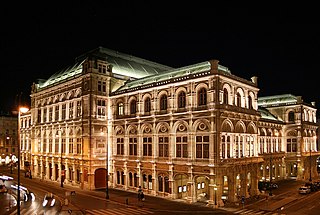
The Vienna Opera Ball is an annual Austrian society event which takes place in the building of the Vienna State Opera in Vienna, Austria on the Thursday preceding Ash Wednesday. Together with the New Year Concert, the ball is one of the highlights of the Viennese carnival season.

A ball gown, ballgown or gown is a type of evening gown worn to a ball or a formal event. Most versions are cut off the shoulder with a low décolletage, exposed arms, and long bouffant styled skirts. Such gowns are typically worn with a opera-length white gloves and vintage jewelry or couture, stole, cape or cloak in lieu of a coat. Where "state decorations" are to be worn, they are on a bow pinned to the chest, and married women wear a tiara if they have one. Although synthetic fabrics are now sometimes used, the most common fabrics are satin, silk, taffeta and velvet with trimmings of lace, pearls, sequins, embroidery, ruffles, ribbons, rosettes and ruching.
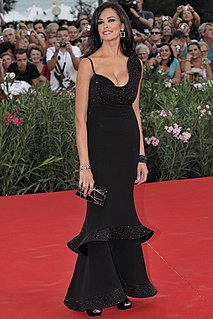
An evening gown, evening dress or gown is a long dress usually worn at formal occasions. The drop ranges from ballerina, tea, to full-length. Such gowns are typically worn with evening gloves. Evening gowns are usually made of luxurious fabrics such as chiffon, velvet, satin, organza, etc. Silk is a popular fibre for many evening gowns. Although the terms are used interchangeably, ball gowns and evening gowns differ in that a ball gown will always have a full skirt and a fitted bodice, while an evening gown can be any silhouette—sheath, mermaid, A-line, or trumpet shaped—and may have straps, halters or even sleeves.
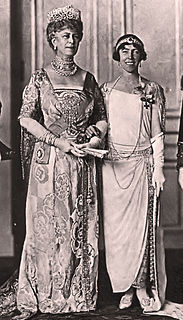
Ladies' evening gloves or opera gloves are a type of formal glove that reaches beyond the elbow.
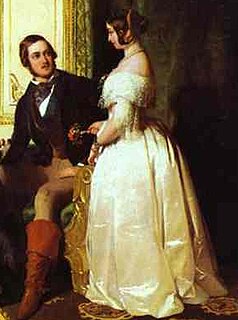
1840s fashion in European and European-influenced clothing is characterized by a narrow, natural shoulder line following the exaggerated puffed sleeves of the later 1820s and 1830s. The narrower shoulder was accompanied by a lower waistline for both men and women.

Court uniform and dress were required to be worn by those in attendance at the royal court in the 19th and early 20th centuries.
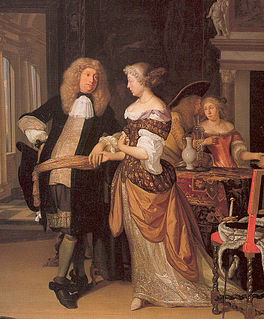
Fashion in the period 1650–1700 in Western European clothing is characterized by rapid change. The style of this era is known as Baroque. Following the end of the Thirty Years' War and the Restoration of England's Charles II, military influences in men's clothing were replaced by a brief period of decorative exuberance which then sobered into the coat, waistcoat and breeches costume that would reign for the next century and a half. In the normal cycle of fashion, the broad, high-waisted silhouette of the previous period was replaced by a long, lean line with a low waist for both men and women. This period also marked the rise of the periwig as an essential item of men's fashion.
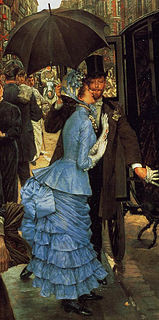
1880s fashion in the in Western and Western-influenced countries is characterized by the return of the bustle. The long, lean line of the late 1870s was replaced by a full, curvy silhouette with gradually widening shoulders. Fashionable waists were low and tiny below a full, low bust supported by a corset. The Rational Dress Society was founded in 1881 in reaction to the extremes of fashionable corsetry.

The most characteristic North American fashion trend from the 1930s to 1945 was attention at the shoulder, with butterfly sleeves and banjo sleeves, and exaggerated shoulder pads for both men and women by the 1940s. The period also saw the first widespread use of man-made fibers, especially rayon for dresses and viscose for linings and lingerie, and synthetic nylon stockings. The zipper became widely used. These essentially U.S. developments were echoed, in varying degrees, in Britain and Europe. Suntans became fashionable in the early 1930s, along with travel to the resorts along the Mediterranean, in the Bahamas, and on the east coast of Florida where one can acquire a tan, leading to new categories of clothes: white dinner jackets for men and beach pajamas, halter tops, and bare midriffs for women.

Fashion in the period 1900–1909 in the Western world continued the severe, long and elegant lines of the late 1890s. Tall, stiff collars characterize the period, as do women's broad hats and full "Gibson Girl" hairstyles. A new, columnar silhouette introduced by the couturiers of Paris late in the decade signaled the approaching abandonment of the corset as an indispensable garment.
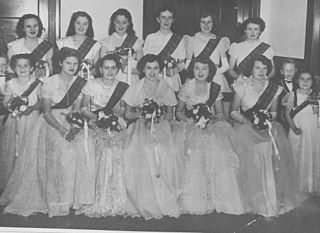
A debutante dress is a pure white ball gown, accompanied by long white gloves and pearls worn by girls or young women at their debutante cotillion. Debutante cotillions were traditional coming of age celebrations for eligible young ladies ready to be presented to society as ready for marriage. Once restricted to young women from wealthy families on the social register, the traditional long, white formal dress and opera-length kid gloves of the debutante are more and more frequently also worn by daughters of the middle class.
References
- ↑ "Dresssing for the Opera". janeausten.co.uk. Retrieved 2021-06-08.
- ↑ "learn about necklace lengths". pearlparadise.com. Retrieved 2021-09-29.
- ↑ "The Language of Jewelry". turleyjewelers.com. Nov 27, 2017.
- ↑ "WHAT IS OPERA GLOVES? WHAT LENGTH IS IT? HOW TO STYLE AND WEAR THEM?". victoria-gloves.com. January 9, 2021.
- ↑ "Stockings size chart". alexis4u.com. Retrieved 2021-06-08.
- ↑ "Sizing Info". stockingshowcase.com. Retrieved 2021-06-08.
- ↑ "Opera stockings". leggycelebs.com. Oct 11, 2021.
- ↑ "Opera Stockings". legambedelledonne.com. Dec 16, 2013.
- ↑ "What are opera stockings". viennemilano.com. Retrieved 2021-07-02.
- ↑ "Curtseys over cursing: 'Debutante' examines old-fashioned ceremony and its attendant good manners". nydailynews.com. May 9, 2014.
- ↑ "Make Your Debut At The Vienna Opera Ball-Dresscode". wiener-staatsoper.at. Retrieved 2021-06-08.
- ↑ "VIENNA BALL SEASON: EVERYTHING YOU EVER WANTED TO KNOW". concert-vienna.com. Feb 6, 2019.
